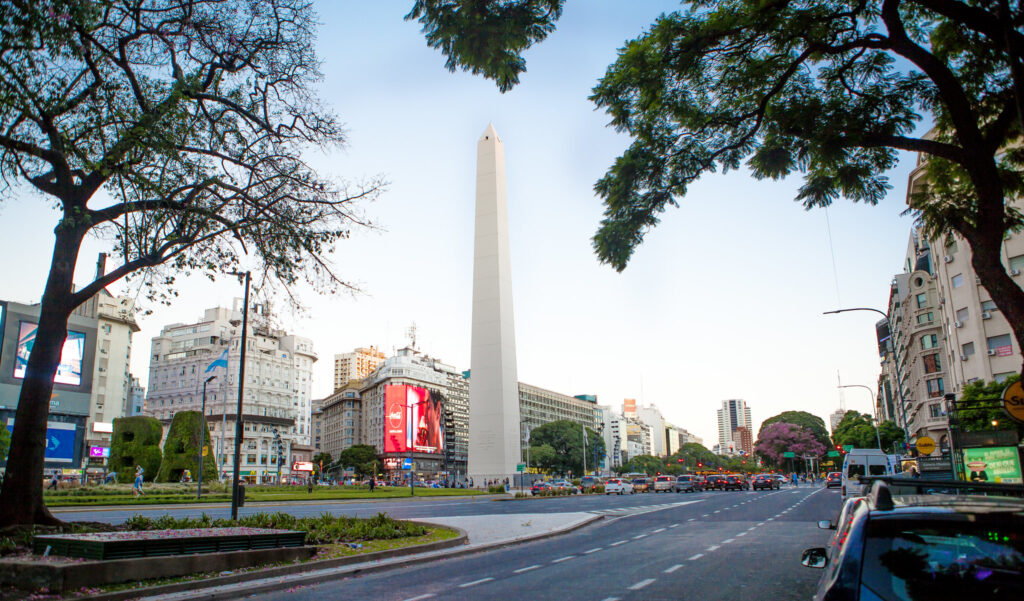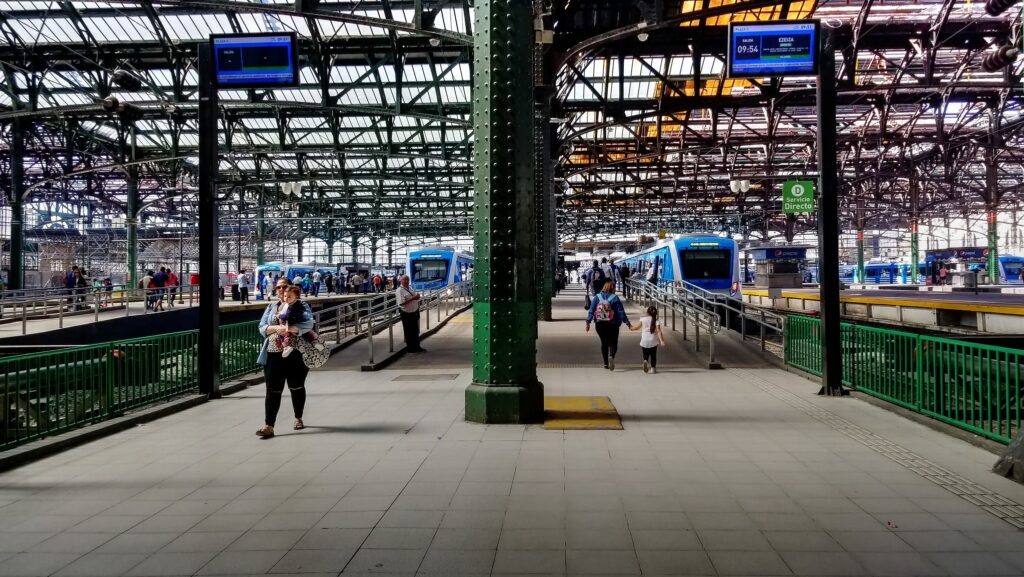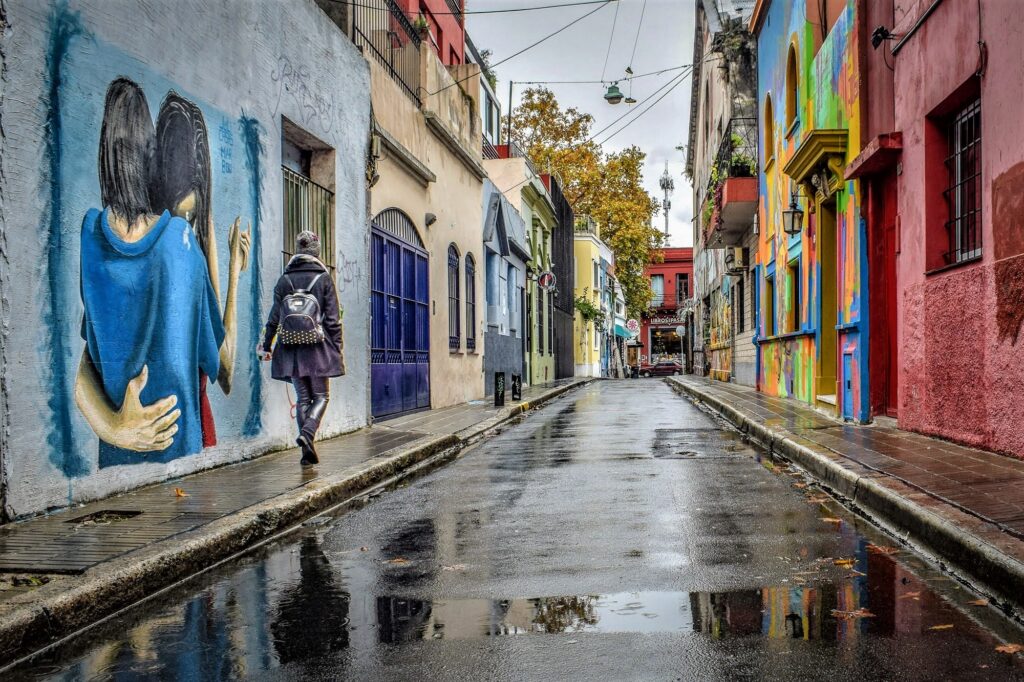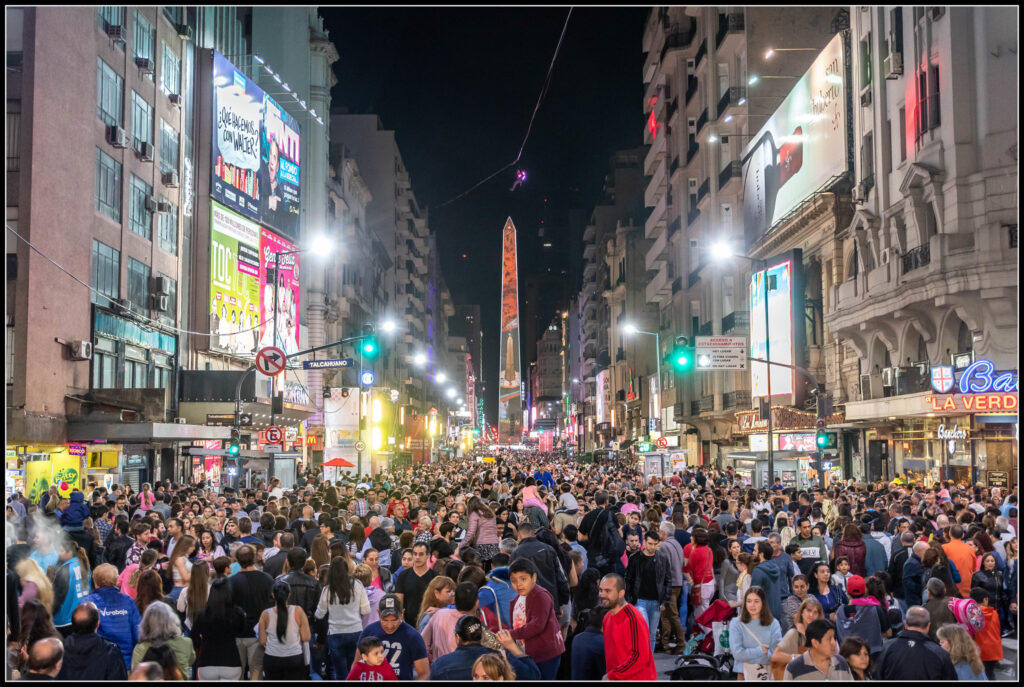How safe is Buenos Aires for expats, travelers, and digital nomads? This is a question many ponder before visiting Argentina’s bustling capital.
At ExpatPathways, we understand your concerns and have crafted a detailed guide that examines the safety of Buenos Aires.
From insightful statistics to practical tips, our article covers essential information to help you move, visit, or work in the city with confidence.
Learn about the safest neighborhoods, tips for keeping your belongings secure, and advice on navigating the city’s public transport.
Whether you’re planning to explore the vibrant streets of Palermo or considering settling down in Recoleta, our guide ensures you’re well-prepared for a safe and enjoyable experience in Buenos Aires.
How safe is Buenos Aires?
Buenos Aires, a vibrant city known for its rich culture and stunning architecture, also prompts questions about its safety. This article serves as a comprehensive guide for foreigners, digital nomads, and travelers looking to understand the safety dynamics of Buenos Aires.
Some Statistical Data on Safety in Argentina and Buenos Aires
- Argentina ranks as one of the countries with the lowest crime rates in Latin America, with 4.6 homicides per 100,000 inhabitants.
- The number of homicides in Argentina has decreased over the last 50 years.
- In 2022, Argentina experienced nearly 400,000 robberies.
- Thefts in Argentina exceeded 300,000 in 2022.
- Buenos Aires City boasts one of the lowest insecurity rates in Argentina, with only 2.86 homicides per 100,000 inhabitants.
- Neighborhoods with the highest number of robberies and thefts include Balvanera, San Cristóbal, and San Nicolás, primarily due to their high population flow.
- Neighborhoods with the lowest incidence of robberies and thefts are Caballito, Saavedra, Villa Urquiza, and Villa del Parque, primarily in the central and northern areas of the city.
- Buenos Aires Province exhibits a higher level of insecurity compared to Buenos Aires City, with 3.67 homicides per 100,000 inhabitants.
- Areas in Buenos Aires Province with higher levels of insecurity include Lomas de Zamora, Avellaneda-Lanús, Morón, and La Matanza, located in the western and southwestern parts of the province.

Dangerous Areas for Tourists in Buenos Aires
Public Transportation Stations
While public transportation stations generally see significant foot traffic, certain times—especially at night and on weekends—see increased crime risks. This includes bus stops along streets and avenues, as well as train and subway platforms.
Informal Settlements
These are precarious settlements located in the peripheral areas of Buenos Aires. Most are in the southern part of the city (Nueva Pompeya, Barracas, La Boca) and are considered high-risk areas for crime.
However, some settlements are also in central areas, particularly around abandoned sites, under bridges, and near railways.
Neighborhoods such as La Boca, San Telmo, Puerto Madero, Retiro, and Recoleta are notable for their proximity to these settlements.
Microcentro of Buenos Aires
This area is not inherently unsafe but becomes riskier at night. Post-COVID-19, many homeless people began using quieter streets and plazas as places to sleep.
The area’s heavy weekday population flow and its ongoing gastronomic, cultural, and political activities help mitigate some of the security risks.
Palermo, Recoleta, and San Telmo
Are these popular areas of Buenos Aires unsafe? Not exactly, but they are hotspots for petty criminals targeting tourists and foreigners, especially from motorcycles.
Therefore, it’s crucial for visitors frequenting Palermo, San Telmo (including Puerto Madero, Recoleta, and Villa Crespo) to remain vigilant.
Train Terminals
Constitución and Retiro are two major train terminals in the city. While they are bustling with passengers during most of the day, the areas surrounding these terminals are particularly prone to theft and more serious crimes.

Daytime Safety in Buenos Aires
Daytime security in Buenos Aires is generally good. From early morning until around 1 PM, the city is bustling with activity from commuters and commercial transactions, creating a safe environment.
The exception is between 1 PM and 3 PM and during the summer break in January and February, when activity dips slightly.
Despite this, Buenos Aires remains very safe for walking, enjoying a coffee, or having lunch at a bar or restaurant during morning and midday hours.

Nighttime Safety in Buenos Aires
Nighttime security in Buenos Aires presents nuances important for tourists, expats, and foreign travelers to understand.
Post 6 PM, the flux of transport and pedestrians increases, generally ensuring safety due to the high concentration of people.
Restaurants and bars are safe to frequent during these hours, though it is advisable to be cautious with personal belongings, especially outdoors.
After 9 PM, as the population movement and public transport frequency decline, it becomes prudent to stay alert, use taxis or ride-sharing apps, and keep belongings secure.

Agencies and Organizations Responsible for Safety in Buenos Aires
The City Police of Buenos Aires
- Contact number: 911.
The City Police of Buenos Aires, established by the Law 5688/16 of the Comprehensive Public Security System on November 17, 2016, began operations on January 1, 2017.
The police force aims to facilitate the full exercise of constitutional freedoms, maintain order, protect individuals and their properties, and promote crime prevention programs.
They are also involved in the coordination of emergency responses and traffic safety.
Functions of the City Police
- To facilitate the full exercise of constitutional freedoms in Buenos Aires.
- To maintain public order and tranquility.
- To protect individuals, their rights, and properties.
- To promote and coordinate crime deterrence and prevention.
- To coordinate efforts to prevent crimes, misdemeanors, and infractions.
- To foster criminal investigations and prosecute offenders.
- To exchange crime-related information as per law.
- To oversee the reintegration of the convicted in society.
- To coordinate with various authorities in case of disasters.
- To ensure traffic safety and oversee private security services.
Find the police station closest to you
SAME (Emergency Medical Attention System)
- SAME number: 107
Dial 107 for free public emergency medical services. SAME provides rapid medical responses to urgent and emergency health issues throughout Buenos Aires, aiming to reach any city point within 14 minutes.
Supported by specially equipped mobile units and backed by hospital emergency departments, SAME plays a crucial role in managing pre-hospital emergencies.
Civil Defense
- Emergency number: 103
The General Directorate of Civil Defense deals with comprehensive risk management, focusing on reducing risks through prevention, mitigation, and preparedness, as well as crisis management in emergencies like fires or floods.
This department also engages in community training and promotes self-protection measures across various media.
Monitoring System and Cameras in Buenos Aires
The Urban Monitoring Center in Chacarita, the largest in Latin America, manages 7,329 cameras covering streets and subways. These cameras, equipped with facial recognition technology, help prevent crimes and expedite police response.
The system only generates alerts for individuals listed in the National Database of Rebellions and Arrests (Co.Na.R.C), ensuring targeted and efficient law enforcement.
The center features advanced technology and is staffed by experienced personnel, aiding in rapid and accurate police investigations and interventions.
| Emergency numbers in Buenos Aires City | Government agency | Purposes |
| 911 | Policía de la Ciudad | Provides prompt attention to emergencies and events that require the immediate presence of the different public forces that make up the City’s Comprehensive Public Security System. |
| 107 | SAME | Free ambulance and emergency medical care service that covers the entire City. |
| 103 | Defensa Civil | It acts in the event of floods, accidents on public roads, spills of toxic substances, etc. |
| 147 | Atención Ciudadana | Provides advice and information on City procedures. |
| 100 | Bomberos | Permanent attention 24 hours. Attention to emergencies, accidents. |
Safety Tips for Staying Secure in Buenos Aires
Use of Phones
Mobile phones are a prime target for thieves in Buenos Aires. To avoid theft, it’s advisable to limit phone use while walking on streets or avenues.
Quick snatches are common, so keep your phone out of back pockets or easily accessible places.
Cameras
Tourists with cameras are often targeted by thieves, especially in high-traffic areas like the Microcentro (around the Obelisco and Plaza de Mayo), as well as popular tourist spots such as La Boca, Puerto Madero, and Recoleta. Be vigilant and keep your camera secured.
Backpacks and Bags
Snatching and opening backpacks and bags is a frequent crime in Buenos Aires. This often occurs at railway and subway platforms and busy streets.
Although carrying a backpack or bag isn’t discouraged, staying alert to unusual movements and potential unauthorized access is crucial.
Bus Stations
Bus stations across Buenos Aires are usually crowded, reducing the likelihood of being alone while waiting for a bus.
However, vigilance is essential both when boarding and alighting to prevent snatch-and-grab incidents.
Interaction with Strangers
Homeless people, vagrants, and street vendors are common, especially from late afternoon to night.
Areas like the Microcentro, Palermo, San Telmo, Puerto Madero, and other busy districts are where such individuals are most active. It’s advisable to avoid engaging with them as they may use interaction as a chance to steal.
Train and Subway Platforms
Always be alert at train and subway platforms, particularly during off-peak hours or when passenger traffic is high.
Keep your belongings secure and your bags in front, especially when boarding or leaving trains.
Use of Vehicle Apps at Night
Using apps like Uber or Cabify can be safer than public transportation during the night or when traveling to less secure areas.
These services offer a secure and reasonably priced option for getting around the city safely.
Avoiding Parks and Plazas at Night
Parks and plazas, while frequented by homeless and potentially dangerous individuals at night, should be avoided during these hours. Opting for a longer, safer route is recommended over cutting through these areas.
Wearing Jewelry
Jewelry such as gold chains, watches, and bracelets attracts thieves. Be mindful of wearing visible expensive items, especially in crowded areas or when using public transport.
Bicycle Security
If cycling is your main mode of transportation, never leave your bike unattended in public spaces. The theft of bicycles has become a common crime. If necessary, ensure your bike is always within sight and securely locked.
Outdoor Seating at Eateries
For those who do not smoke, sitting at outdoor tables at restaurants or bars, unless in large groups, can increase the risk of theft.
Street vendors and snatchers often target diners seated outside. It is safer to sit inside, especially if alone or in smaller groups.

Final Considerations
Overall, Buenos Aires and Argentina are relatively safer for tourists and foreigners compared to other regions in Latin America.
While the Metropolitan Area of Buenos Aires generally has low crime rates, it is noteworthy that the Province of Buenos Aires has higher crime rates than the City.
For those planning to stay or visit, northern parts of the city are generally safer than the southern areas.
Familiarity with the local security forces and emergency contact numbers can greatly enhance your safety in Buenos Aires.
Always stay prepared and mindful of your surroundings to enjoy a safe and pleasant experience in this vibrant city.
(Featured Image Source: Ted McGrath/flickr.com)


